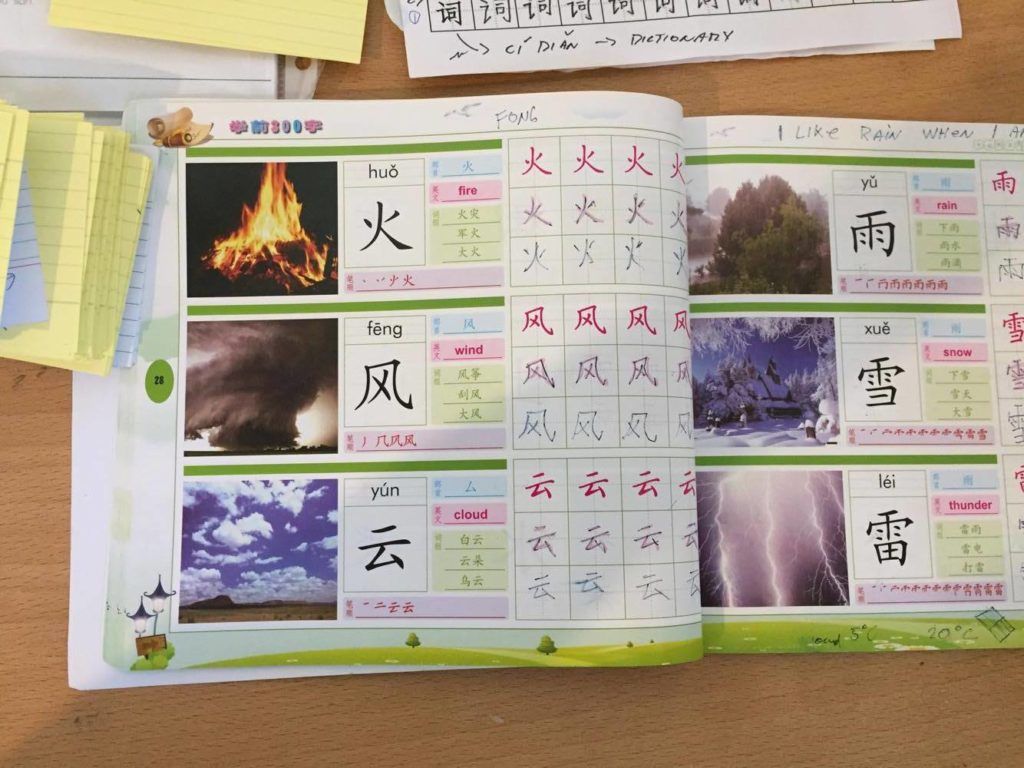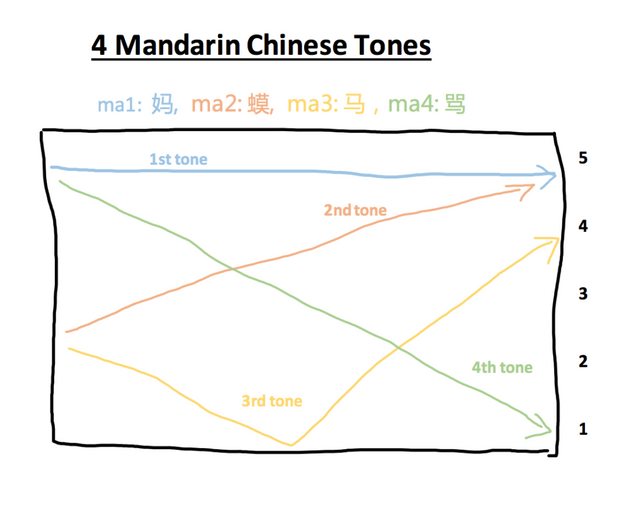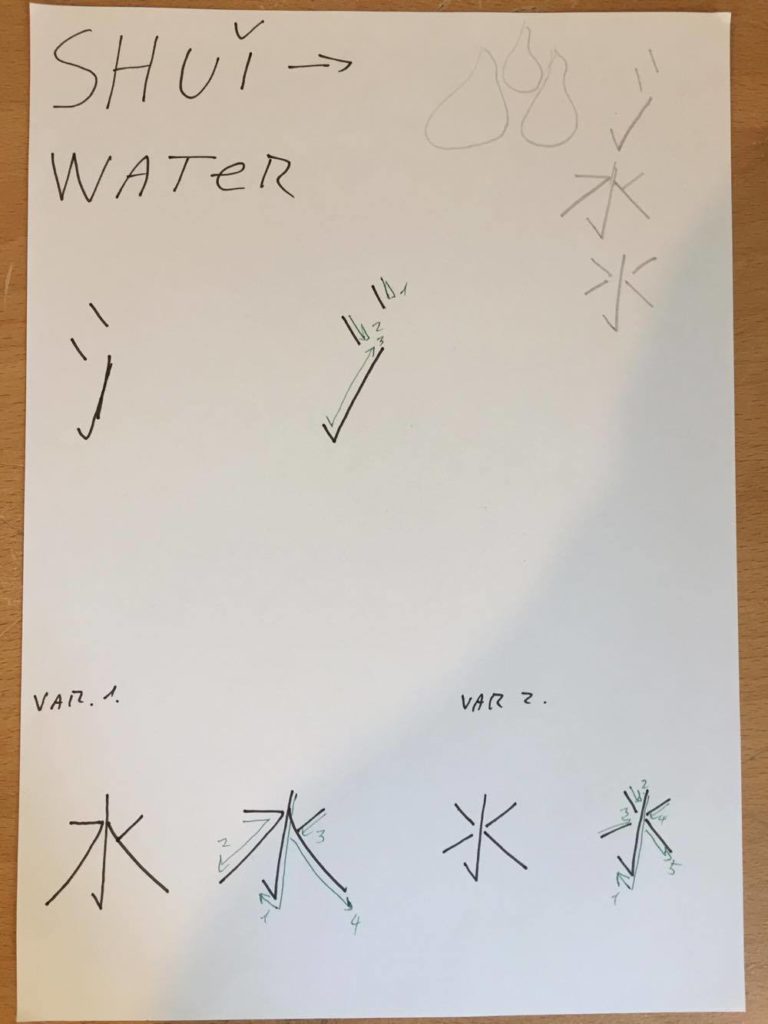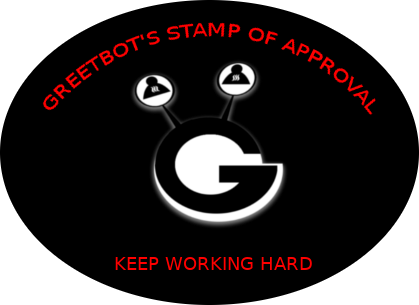My Story How I Learned Mandarin Chinese And A Few Tips
It's always the case that people need an incentive to start doing something. In my case, it was mostly curiosity at first - I was so baffled and fascinated by Chinese characters whenever I saw them on TV, the internet or when I visited Beijing before the Olympics games in 2007. I just needed to know more about them and so I started to learn.
My second motivation came when I met my girlfriend (ex-gf now). Since her parents didn't speak English or Czech, I needed to be in the best shape possible. It was somehow funny when I finally traveled to 中山 (ZhongShan) and found out that most people there, especially the elderly, speak Cantonese Chinese which is mostly a different language. You can only imagine my conversations with her parents. :D Anyway, at least the characters remained the same and so my curious/learning spirit stayed intact.
The final reason, why I keep on learning Mandarin stems from the fact that I believe China is and will be a good place to live in the future and having more options to choose from is always good.

This is a kid’s book with the 200 most common Mandarin Chinese characters. I bought it in Zhongshan (中山).
I want to leave you with my tips on how I started learning Mandarin Chinese.
Before we go to the tips, I want to point out that those tips should be applied before you start learning Chinese. Trust me, they will make your life much easier and will save you a lot of time. Think of the tips as the multiplication table. You can multiple 4×4 by just adding 4+4+4+4 or you can learn that 4×4 is 16. Later on, you realize that memorizing the multiplication table will save you plenty of time if you want to calculate 43×23 without a calculator.
I hope this metaphor is clear. These tips are something you invest in now with the hope of great returns in the future.
1) TIP: Be sure to handle the tones first
In comparison to other languages, Mandarin Chinese has 4 tones plus a neutral one. It’s crucial to pay attention to how you say a certain word. In some cases, using a different tone changes the meaning of the word completely.
Before giving you an example, I have to explain what the pinyin system is.
What is the pinyin system and how to read tones in it?
The pinyin system was invented in the 1950s to help foreigners learn Mandarin Chinese. To give you an example, [ni3] means “you” and it’s written as 你. [ni3] is the pinyin and tells you exactly how to pronounce 你 using rules from the pinyin phonetic chart. You might have noticed the index number 3 behind [ni]. That’s not a mistype. This is the way how you can mark tones in pinyin.
The following picture should clarify this:

Don’t get discouraged by this picture. Learning Chinese is like learning to sing. And by the way, I am a terrible singer and yet I learned tones quite well.
The first blue tone is a high pitched tone which runs constantly during the whole syllable.
The second orange one is like a linear function where the pitch is low at the start and increases over time.
The 3rd one is also called a bounce tone, because it starts relatively high, drops down and bounces back to the high pitch contour.
The last green tone is a drop tone. It starts very high and plummets. It’s also called an “angry tone” and that’s why Chinese people might seem angry all the time even though they are happy. 😀
Back to the first example
Now that we understand the pinyin system and tones, let’s get back to why it’s so important to get your tones right and practice them from the beginning.
There are words in Mandarin Chinese which completely changes meaning as the tone changes. For instance, “ma” which means:
mother: ma1, 妈
toad: ma2, 蟆
horse: ma3, 马
to scold: ma4, 骂
interrogative final particle: ma5(neutral), 吗
Here is the deal. Usually, the context helps even if someone messes up the tone a bit, but definitely calling your mother (or someone’s mother for that matter) horse is not a good idea.
Your best bet is to really pay close attention to the tones as soon as you start learning. I have a friend who spoke like Sheldon from the Big Bang Theory when he tried to learn Mandarin Chinese in season 1 episode 17. My friend learned about 500 words and characters in about 1 year, later to realize that no one understood him because he hadn’t thought the tones were important.
2) TIP: Learn how to pronounce all the sounds in the Mandarin Chinese Pinyin Chart
The pinyin system was created to standardize and isolate the exact and all sounds that are used in any Chinese word. In all, there are only about 400 different syllables if tones are ignored. Hence, if you know how to pronounce each of them, you can read pinyin of ALL Chinese words. Now, you might be thinking 400 is a big number, but let me tell you, most of the syllables are read exactly as you are used to from your mother language. (It depends on the language, but as English or Czech go, it’s pretty straight forward.)
Adding tones to the 400 syllables makes it 2000 original sounds that you have to know how to pronounce, but again if you know how to pronounce tones from the 1. tip, this won’t take you long to learn.
There are many Chinese pinyin phonetic charts on the internet, feel free to search for the one you like the most. :]
The final mini tip for this subsection is this. Always when you see a pinyin which you don’t know how to pronounce, just check it with some pinyin phonetic chart.

This is a basic radical for water. 水[shui3] is read as “sh+way” with the 3rd bouncing tone.
3) TIP: Choose the right online dictionary
There are hundreds of free dictionary out there. I’ve been using Pleco and can only recommend it. All the basic functions are free and if you start to take Chinese seriously you can always buy some extra features like different voices, hand writing of characters, and more.
I also use a dictionary called Written Chinese. It has similar functions as Pleco. The most noticeable difference is that Written Chinese is a website dictionary too so if you are on your computer, it’s quicker to use this one.
Then, there are some old school dictionaries, which help you to separate a given character into its fundamental radicals. I will talk more about radicals in Tip 5. The name of the website I use is called HanziCraft.
4) TIP: Find a person who will keep checking on your pronunciation
This might be obvious but I want to mention it anyway. Chinese is a tone language and because of this very reason, there is no way you can learn it by just watching youtube videos or reading blog posts. Someone has to check whether your pronunciation is spot on.
I would recommend at least one of the following.
1] Get to a Chinese class for foreigners
2] Get one to one tutoring with a Chinese teacher or friend
3] Find a Chinese person who would check your pronunciation on skype or any other communication network
4] Get to a buddy program where you teach your language and someone else teaches you Chinese. This is how I met my ex-gf btw.
Besides the benefits of actually knowing that your pronunciation is sound, you will also get familiar with how the language sounds from a real person. Moreover, if you learn by listening and speaking, the better.
5) TIP: Learn all the most important radicals
This last tip will take you the most time. There are two schools of thought on whether a beginner should learn characters straight away, or first get some sufficient vocabulary of at least 1000 words with basic grammar.
I thought that it was better to start learning characters right away and so I did. I was surprised though that there is a logic in most characters, therefore they can be easier memorized than most people think.
Let me explain.
How to memorize Chinese characters most efficiently
火车 [huo3 che1] means a train. It is composed of two characters, 火 [huo3]: fire🔥 and 车 [che1]: car, vehicle. You have to understand that Chinese is a very old language and when trains were invented, they still used coal to run and so people started calling them: “fire vehicles”.
This is pretty easy to memorize if you know the basic characters (which we call radicals) 火 and 车. You just use a bit of imagination and connect the words together in your mind.
I wish that every Chinese word would be that easy though. Most of the times, you have to make up your own imaginary story to make it easier for yourself to remember the characters.
For example, 可爱 [ke3 ai4] means cute. 可 [ke3] means “can, could, or be able to…” and 爱 [ai4] means “to love someone or love”. You see that there is no apparent connection which would help us memorize 可爱 as cute. So we have to create our own association. You can say that if some CAN LOVE something so much, it must mean the something is CUTE. This is just the way how I remember it. 😀 You can create your own. I am going to give you one more example in the next subsection.
At first, memorize the most commonly used 100 Chinese radicals.
As of now, we have seen words which were composed of two characters. Sometimes these characters are so basic that there are radicals too, but most of the times, characters are composed of 2-5 radicals.
This implies that radicals are the most basic building blocks for every character, word, and sentence.
To give you an example, let’s take a word 想 [xiang3] which roughly means “would like to, to wish, to want…”. This word contains 3 radicals. Those are 木 [mu4]: tree, 目 [mu4]: eye, 心 [xin1]: heart. You can use an online dictionary to look up all the radicals of a given character.
Again, there is no obvious connection between tree, eye, heart and the mean which is “would like to, to want..”. The way I remember it is that I imagine a bleeding tree like the one in Game of Thrones which has 2 pairs of eyes and as it holds its own heart, it screams: “I WANT my heart back inside me.”
It’s a bit extreme imagination but in my opinion, our memory works the best with vivid and extremely emotional images. For me, this does the trick.
The best thing you can do from the beginning is to start learning the 100 most commonly used radicals. There are more of them, but the 100 is in 99% of Chinese words.
Extra tips on Mandarin Chinese and summing it all up
There are a few more micro tips I would like to quickly add. The first one is that you should definitely take an advantage of numerous free Chinese apps which are a perfect complement to a normal face to face class. I highly recommend HelloChinese and ChineseSkill. I have done both of them and learned so much, maybe even more than from regular classes which I attended for 4 semesters.
The last bit of a tip, I am going to leave you with is that you should definitely start browsing Chinese internet websites like Baidu (kind of like a Chinese google), Youku (a Chinese youtube), or if you are a fan of computer games, Douyu (a Chinese Twitch). Couple it up with watching some Chinese movies and you will become fluent in no time.
Finally, learning a language is a lot about your belief system. If you have some limiting beliefs about being a bad learner of languages, it can hold you back and hinder your progress.
The very finally, I promise. 😀 It’s great to make more friends. The Chinese government is still blocking Facebook (2017/2018) and so most Chinese are using WeChat. You can make friends there and text/call them for free. Personally, I think it’s a great way to practice speaking and listening and perhaps you can teach them something too.
This is it, if you liked reading this and would like to know more about the story or more tips, let me know. I would be happy to share.
Daniel Pelnar (CzechDanny)
wow super článok Daniel and welcome to Steemit! ;)
Zdarec, jsi ze Slovenska? :] a dik
Ahoj, áno som, ale momentálne žijem v Mexiku;)
You actually managed to make learning Chinese seem a little bit simpler! I've studied a little Japanese and Korean before but Chinese has always intimidated me, This post makes me want to look into it further now, though. Thanks for this awesome guide!
In my opition, Japanese is harder because the characters are less logical, but that might be just me. I am happy that I inspired you to look into Chinese more :]
Also, I see you're new. Welcome to Steemit!
yop, I am new. I've always just been blogging on my own site but this is more fun - people are actually commenting and there is a way more interactions
Hi. I am @greetbot - a bot that uses AI to look for newbies who write good content.

I found your post and decided to help you get noticed.
I will pay a resteeming service to resteem your post,
and I'll give you my stamp of automatic approval!
haha:D What is it? a greetbot, can you explain? :D
I scan the network for newbies posts that received little or no reward, and are not too short (that's the easy part) and then I filter them by their use of the English language (that's the really hard part).
Your post got selected because you write good English. My bot read through the text and assumed that since the language seems nice and structured, your content is probably good as well.
Then it rewarded you.
That's it.
That seems nice, thanks for helping. Is there a way I can help too?
I do need help, but unfortunately I don't think it is within your ability.
Just enjoy SteemIt, and write good content!
Resteemed by @resteembot! Good Luck!
The resteem was payed by @greetbot
Curious?
The @resteembot's introduction post
Get more from @resteembot with the #resteembotsentme initiative
Check out the great posts I already resteemed.